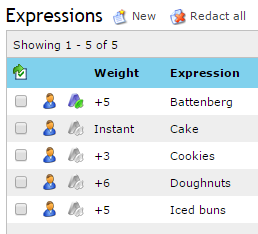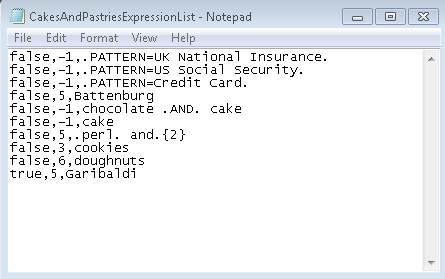You can create your own lexical expressions directly, or you can use text entities to build them. A text entity is a pre-defined or user-defined component or building block that you can include in a lexical expression.
There are three types of text entity:
-
 Predefined Entities
Predefined Entities
Predefined Entities are pre-configured, standard lexical patterns which are frequently used. For example predefined entities can match against Credit Card Numbers or identification numbers from different regions (identity card, driving license, passport and Japanese My Number). Predefined entities are fixed patterns and cannot be edited.
-
 User Defined Entities
User Defined Entities
You can configure your own reusable text entities. These user-defined entities are displayed in a list and are available for use in lexical expressions.
-
 Lexical Expression Qualifiers
Lexical Expression Qualifiers
Lexical expression qualifiers are specific values you might want to detect, rather than general lexical patterns. For example, you might have a particular list of identification numbers you want to redact or block. You can import the list as a set of qualifiers and then use them in a lexical expression. See Lexical Expression Qualifiers for more information.
 Currently applied to a content rule
Currently applied to a content rule Not currently applied to a content rule
Not currently applied to a content rule Contains no lexical expressions
Contains no lexical expressions
 New
New are indicated in the Lexical Expression List.
are indicated in the Lexical Expression List.  Delete
Delete
 Edit
Edit Import expressions
Import expressions